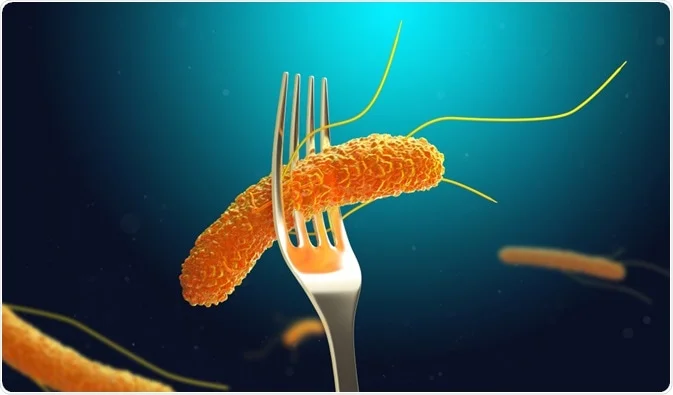Table of Contents
When we talk about commercial animal feeds, we're referring to the pre-packaged food that's designed to be fed to livestock, poultry, pets, and other animals. These feeds are crucial for maintaining animal health and promoting growth, but there's an important issue to be aware of: Salmonella contamination. Salmonella is a type of bacteria that can make both animals and humans sick. But how does this harmful bacteria end up in animal feeds? In this article, we’ll break down the key factors that contribute to Salmonella contamination in commercial animal feeds and why it’s such a serious issue.

The journey of Salmonella contamination often starts with the raw materials used to make animal feed. Many animal feed ingredients, such as grains, soybeans, fishmeal, and meat by-products, are natural and can carry harmful bacteria like Salmonella if they come from infected sources.
Animal by-products: If these by-products come from animals that were infected with Salmonella, the bacteria can easily transfer into the feed during processing.
Grain contamination: Grains like corn and wheat are often grown in the fields where animals roam. If wild animals or livestock have Salmonella, the grains can become contaminated before they're even harvested.
At this stage, even the best cleaning procedures can't always remove all traces of bacteria.
Once the raw materials are collected, they undergo various processing steps to turn them into animal feed. Some of these processes involve heat treatments like baking or steaming, which are intended to kill bacteria, including Salmonella. However, these treatments are not always 100% effective.
Underprocessing: If the feed isn't processed at high enough temperatures or for long enough, Salmonella can survive.
Contamination after heat treatment: If the feed is cooled down in unsanitary conditions or if there's a lapse in cleanliness during handling, the bacteria can be reintroduced to the feed.
The temperature and time during processing are crucial factors that determine whether the feed ends up being safe for consumption or not.
Cross-contamination occurs when Salmonella from one batch of feed spreads to another. This can happen in several ways:
Shared equipment: If the same machinery or storage containers are used for different feed batches without being cleaned between uses, bacteria can be transferred from one batch to another.
Contaminated water or air: Water used in the production process can also be a source of contamination if it’s not purified. Similarly, dust and particles from the air can settle onto exposed feed.
Cross-contamination is one of the most common ways Salmonella spreads in large-scale feed production.
Once the feed is made, it’s important to store it properly. Storage conditions, particularly humidity, play a huge role in whether Salmonella bacteria thrive in the feed. If the feed is stored in a moist environment, it creates the perfect breeding ground for bacteria, including Salmonella.
Humidity: High humidity levels encourage bacterial growth, while drier conditions can help reduce the spread of bacteria.
Long-term storage: Feed that is stored for long periods, especially under improper conditions, can become more susceptible to contamination.
Properly storing feed in dry, cool, and clean environments is essential for reducing the risk of Salmonella growth.
The health of the animals being fed the commercial feed can also influence the contamination levels. Animals that carry Salmonella can contaminate feed through their feces or through direct contact with feed ingredients.
Farm hygiene: If farms aren’t properly cleaned and sanitized, they can be a constant source of bacteria that contaminates both feed ingredients and finished feed.
Infected animals: If livestock or poultry are already infected with Salmonella, they can pass the bacteria on to the feed during handling.
Ensuring that animals are healthy and that farms maintain strong biosecurity practices can significantly reduce the risk of contamination.
After animal feed is produced and stored, it needs to be transported to farms, pet stores, or other facilities. During this transportation phase, the risk of Salmonella contamination can increase if the conditions aren’t right.
Unclean transport vehicles: If transport trucks are not regularly cleaned, they may carry bacteria from one shipment to another.
Improper packaging: If feed is not sealed correctly or is exposed to moisture during transit, it may become contaminated with Salmonella.
Monitoring transportation conditions and ensuring vehicles and packaging are sanitized is key to preventing contamination during this stage.
Lastly, the people who handle animal feed at various stages—whether it’s during production, storage, or transportation—can unintentionally spread Salmonella if proper hygiene practices are not followed.
Lack of handwashing: Workers who don’t wash their hands or use gloves properly can transfer Salmonella from one feed batch to another.
Contaminated equipment: Tools, machinery, or even clothing can become vectors for Salmonella if not cleaned thoroughly.
Ensuring that everyone involved in the feed production and distribution process follows stringent hygiene protocols is essential in minimizing the risk of contamination.
Salmonella contamination in commercial animal feeds is a serious concern that can affect both animal health and human safety. From raw materials to processing, storage, transportation, and human handling, the risk of contamination exists at every step of the feed production chain. By implementing stricter hygiene practices, improving processing conditions, maintaining proper storage, and being mindful of the health of the animals, we can reduce the risk of Salmonella contamination and ensure the safety of both animals and consumers.
Key Takeaways
Raw materials, particularly animal by-products and grains, can carry Salmonella.
Inadequate processing or cross-contamination during production increases the risk.
Humid and unsanitary storage conditions promote bacteria growth.
Hygiene practices at every step, from production to transportation, are essential for safety.
By understanding these risks and taking preventive measures, the animal feed industry can significantly reduce the potential for Salmonella outbreaks.
animal tags: Salmonella
We created this article in conjunction with AI technology, then made sure it was fact-checked and edited by a Animals Top editor.